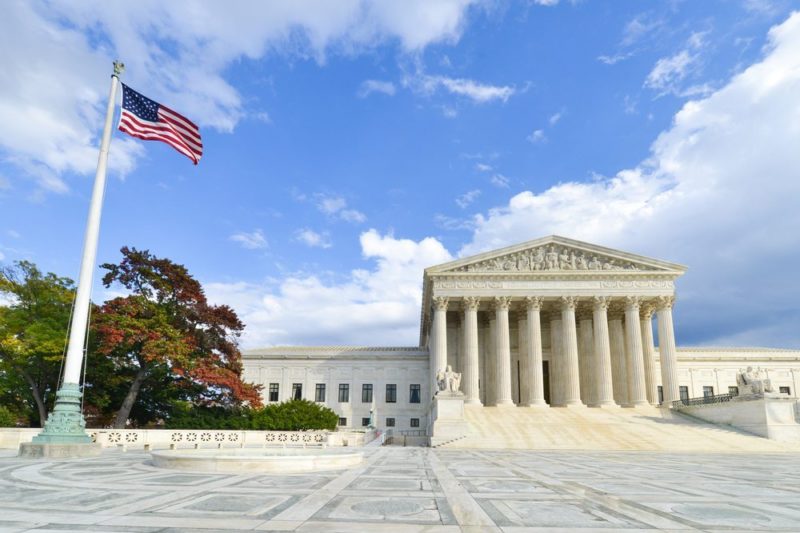Can ‘Roe’ Survive the Roberts Court?
Forty-one years since Roe v. Wade, the question is: Will the Roberts Court do to Roe and abortion rights what it did to health-care reform and keep just enough of it intact to call it legal, while rendering it nearly impossible to obtain?

Abortion rights activists let out a collective sigh of relief recently when the Supreme Court announced it would not take up Horne v. Isaacson, which successfully blocked an Arizona pre-viability abortion ban specifically designed to try and upend Roe v. Wade. The refusal to hear the challenge fell just two weeks shy of the 41st anniversary of Roe, the landmark Supreme Court decision that decriminalized abortion nationwide, but that routine order from the Roberts Court was far from a given.
Though Roe’s foundation feels shakier today than ever, it has long been under attack—first with Harris v. McRae,the Supreme Court case decided just a few years after Roe that upheld the constitutionality of the Hyde Amendment and effectively cut off access to abortion for the poor by making it too expensive to obtain. That attack accelerated after Planned Parenthood v. Casey, the 1992 Supreme Court decision that held states could restrict abortion rights so long as those restrictions did not pose an “undue burden.” Since Casey, but especially since 2010, anti-choice activists have rushed to find out just how far they can go to restrict abortion rights under that standard.
The result has been a mess. One federal appellate court upheld mandatory ultrasound requirements as consistent with Roe and Casey, while state supreme courts have struck them as violating those same decisions. Despite the fact that states cannot ban abortion pre-viability, at least 11 states currently have pre-viability bans on the books, with some, like Arkansas and North Dakota, brazenly banning abortion as early as six weeks. Meanwhile, states like Texas, Mississippi, and Wisconsin have used medically unnecessary mandates requiring doctors to have admitting privileges at their local hospital to try and drive providers out of business and force the legal question of whether or not states unduly burden a right to choose by shuttering clinics within its borders. So far, at least one appellate court seems to think they don’t.
But it’s been over the last four years that those attacks have truly escalated, as conservative lawmakers in states nationwide seized political opportunity and passed restriction after restriction, each more draconian than the last. And given the Roberts Court, its conservative majority, and deep sympathies to the anti-choice cause and tactics, well, it’s easy to see why this anniversary feels different.
Yet, when given the opportunity, the hostile anti-choice majority on the Roberts Court passed at taking another look at Roe. Not only that, but two other times this year the Supreme Court avoided calls from conservatives to “revisit” or “clarify” the ruling that prior to fetal viability states may not ban abortion, nor unduly burden a woman’s right to choose abortion, letting stand decisions supporting abortion rights. So what gives? Despite a career advancing the cause of the anti-choice right, has Chief Justice John Roberts softened on abortion rights?
Not quite.
First, let’s consider the role of the Roberts Court in helping make all that state-level anti-choice legislation possible, because it was the Court’s decision in Citizens United v. the Federal Election Commission (FEC) that opened the door for big money to connect with conservative model legislation and advance such restrictions, which Rewire’s Adele Stan chronicles here. From that unholy union sprang copycat abortion-restricting legislation in Texas, North Carolina, and Wisconsin. This already bleak landscape may be made even worse if the Roberts Court rules as expected and strikes individual donation limits later this term in McCutcheon v. FEC.
Then there’s the First Amendment. Building off its decision in Citizens United to grant corporations First Amendment speech rights, the Roberts Court looks primed to grant them First Amendment religious exercise rights too. But that’s not the only place where conservatives on the Roberts Court can, and likely will, use the First Amendment to roll back reproductive privacy rights. There’s good reason to think the Court will turn away from the reality of clinic protests and side with the “plump grandmas” and strike down a Massachusetts buffer zone law. A broad enough ruling there could make this kind of harassment routine at clinics everywhere at a time when anti-choice extremists are testing the limits of the Freedom of Access to Clinic Entrances (FACE) Act by arguing their promises to blow up abortion providers’ cars are not really “true threats” and are therefore protected free speech.
During his confirmation hearing, Justice Roberts famously quipped that he saw his role on the Court as one of an umpire—that he was there to call balls and strikes. That feigned objectivity served him well during the first round of challenges to the Affordable Care Act. As the author of the majority opinion, Justice Roberts managed to uphold the general architecture of the law while gutting one of its most important components, its broad Medicaid expansions. As a result, conservatives furiously fundraised, campaigned, and governed around ending health-care reform all together, while making it as difficult to obtain in the short-term.
So, more than four decades since Roe, and that is the question at hand: Will the Roberts Court do to Roe and abortion rights what it did to health-care reform and keep just enough of it intact to call it legal, while rendering it nearly impossible to obtain? So far, all signs point to yes.
